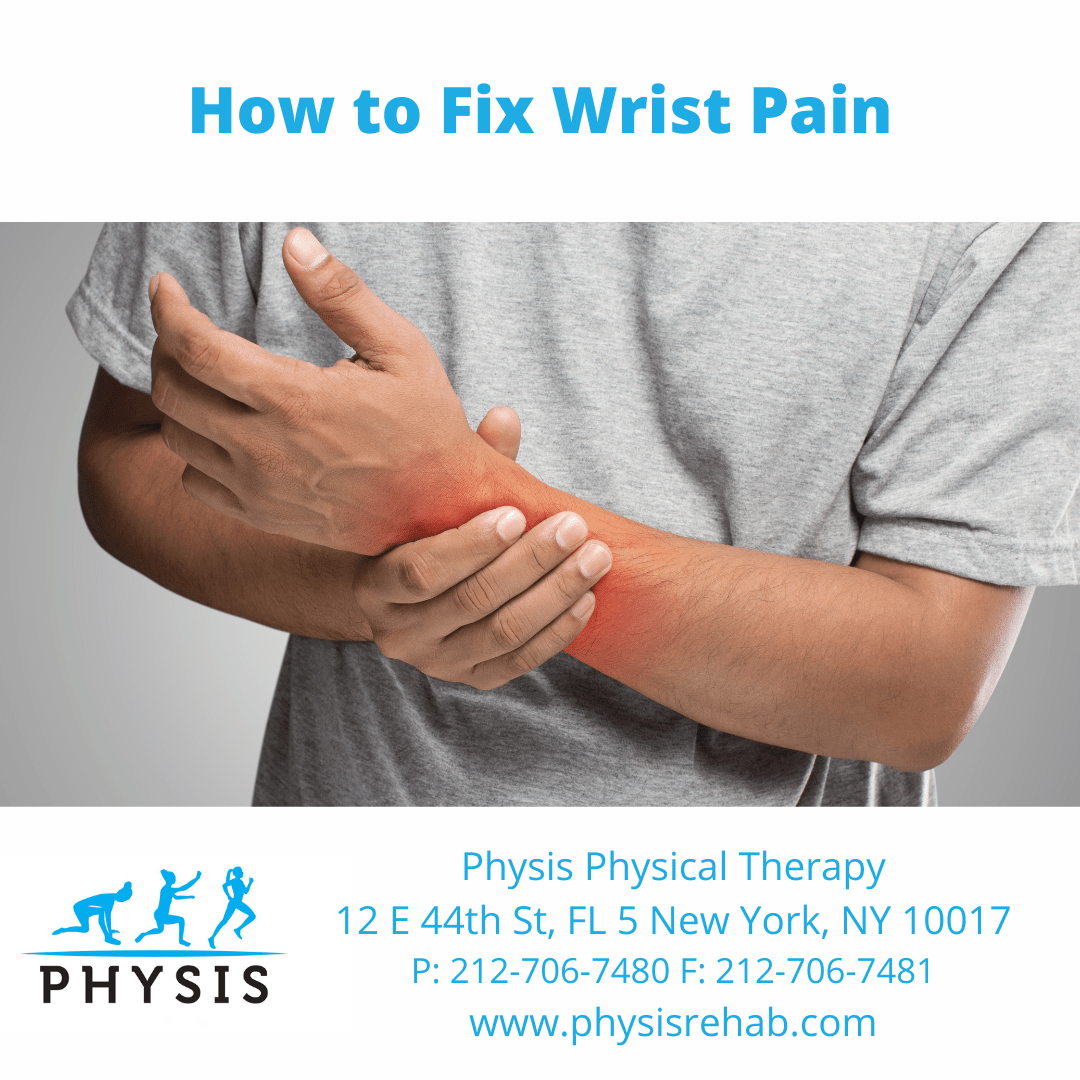The wrist joint connects your forearm to the hand, serving as an attachment point for the muscles from your elbow. It also has a tunnel, which holds some of the tendons of the muscles which control your hand movements. The wrist joint is made of 10 bones while there are 27 bones, 29 joints and about 123 ligaments in the hand. Some smaller groups of muscles, responsible for fine motor control, do originate in your hand, however the bigger muscles are in the forearm and control hand movements through the tendons.
Some of the common causes for wrist pain could be:
- Fractures (Colles Fracture, Scaphoid fracture)
- Dislocations
- Trauma/ Post-Surgical
- Arthritis
- Instability
- Carpal Tunnel Syndrome
- Nerve entrapments
- Intersection Syndrome
- Ligament Sprain
- Double Crush Syndrome
- Triangular Fibrocartilage Complex Injury (TFCC)
- Synovitis
Some of the common symptoms of wrist injuries can be:
- Pain
- Difficulty weight bearing on the hand/wrist/arm
- Swelling on the wrist
- Tightness, locking or clicking at the wrist
- Weakness gripping or holding items like pen, paper, keys, doorknob?
- Numbness or tingling into the arm and hands?
- Tenderness to touch in your elbows, forearm, wrist, or hands?
Treatment for wrist pain largely depends on the diagnosis, limitations, and goals you present with.
Treatment for a fractured wrist involves a cast or a brace, depending on the type of fracture. Once approved for physical therapy, your therapist will start with gentle passive, active assistive and active range of motion exercises. It is critical to regain motion that is lost after a fracture or cast otherwise it leads to compensatory movements at the hands and the elbows resulting in future problems. Your therapist will gradually progress you with gripping and strengthening exercises for the fingers, wrist, elbows, and shoulders to help you regain strength for your daily life.
With carpal tunnel syndrome exercises are recommended with focus on wrist extension stretches, medial nerve glides, gripping and strengthening exercises at the hands and the wrist. The goal is to reduce the compression on the median nerve as it passes through the carpal tunnel in the front of your wrist. Unsuccessful rehab or significant loss of strength in the hands may indicate the need for surgical release.
Arthritis at the wrist is treated with heat, stretches and strengthening exercises to reduce pain, tightness and swelling at the joint.
Instability at the wrist joint can occur due to ligament laxity or an injury at the wrist. It is best to brace it for support and work on strengthening exercises to reduce pain and promote stability. Gripping exercises, exercises for wrist flexors, wrist extensors are great to promote stability.
Post-surgical rehab for the wrist is needed after carpal tunnel releases or tendon/ligament repairs or releases. It is critical to restore motion with passive, active assistive and active exercises, reduce scarring with scar tissue massages and restore strength at the wrist, forearm, and hand muscles to recover fully from the surgery.
Here at Physis PT and Rehab, we understand the difficulty one undergoes in their day-to-day life while coping with arm and hand pain. Our therapists are experts in functional movement assessment and will direct your one – on – one care to break your cycle of pain and activity limitations to help you achieve your goals.



Comments are closed